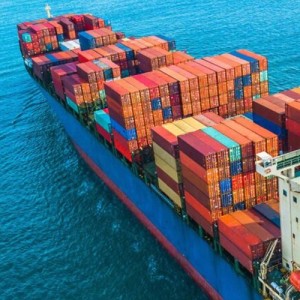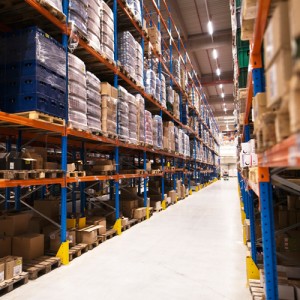Introduction to Distribution Network Design
Welcome to our blog post on Distribution Network Design! If you're a business owner or involved in supply chain management, then you know just how crucial it is to have an efficient and effective distribution network. It's the backbone of your operations, ensuring that products reach customers in a timely manner while keeping costs under control.
In today's competitive marketplace, businesses are constantly striving to gain a competitive edge. One key area where they can make significant improvements is in their distribution network design. By strategically planning and optimizing their network, companies can streamline their operations, reduce costs, and ultimately improve customer satisfaction.
Importance of Distribution Network Design for Businesses
Distribution network design plays a crucial role in the success of businesses. It involves strategically planning and optimizing the flow of goods from suppliers to customers, ensuring efficiency and cost-effectiveness; a well-designed distribution network can have an impact on various aspects of business operations. Distribution network design helps businesses minimize transportation costs by determining optimal routes and modes of transportation. By analyzing factors such as distance, volume, and frequency of shipments, companies can identify the most efficient ways to move their products, thereby reducing expenses and improving profitability.
An effective distribution network design enables businesses to improve customer service levels by strategically locating warehouses or distribution centers closer to end-customers or high-demand areas, companies can ensure faster delivery times and meet customer expectations for timely order fulfillment.
Key Success Factors in Distribution Network Design
When it comes to designing a successful distribution network, there are several key factors that businesses need to consider. These factors play a crucial role in ensuring efficient operations and customer satisfaction. Let's take a closer look at some of these critical success factors.
- Location and Facility Considerations
One of the critical factors that can make or break a business is the location and facility considerations. Choosing the right location for your distribution centers and warehouses is crucial for ensuring efficient operations and timely delivery of goods.
Proximity to customers plays a big role in reducing transportation costs and improving customer satisfaction. By strategically locating your facilities closer to your target market, you can minimize shipping distances and reduce overall transit time. This not only saves money but also enables faster order fulfillment, leading to happier customers.
Accessibility is another key factor to consider when selecting a location for your distribution network. It's essential to choose sites with good transportation infrastructure such as highways, railways, airports, or ports. Easy access will facilitate smooth inbound and outbound logistics operations while minimizing delays due to traffic congestion.
- Inventory Management and Fulfillment Strategies
Inventory management and fulfillment strategies play a crucial role in the success of distribution network design. Efficient management of inventory ensures that businesses have the right products available at the right time, while effective fulfillment strategies ensure timely delivery to customers.
One key factor in inventory management is having accurate demand forecasting. By analyzing historical sales data and market trends, businesses can predict future demand with greater accuracy. This helps in optimizing inventory levels and avoiding stockouts or overstocking situations.
Another important aspect is implementing an efficient order fulfillment process. This involves streamlining picking, packing, and shipping operations to minimize errors and reduce turnaround time. Utilizing technologies like barcode scanning systems can greatly improve accuracy and efficiency in these processes.
- Transportation and Logistics Planning
Transportation and logistics planning plays a big role in the success of distribution network design. It involves determining the most efficient and cost-effective methods for moving products from point A to point B.
One key factor to consider is the mode of transportation. Depending on the nature of the goods and distance they need to travel, businesses may choose between road, rail, air, or sea transport. Each mode has its own advantages and limitations in terms of speed, cost, and capacity.
Another important aspect is route optimization. By analyzing traffic patterns and considering factors such as fuel consumption and delivery times, businesses can identify the most efficient routes for their shipments. This not only saves time but also reduces fuel costs and minimizes environmental impact.
- Technology Integration and Automation
In today's fast-paced business environment, companies need to leverage technology to streamline their operations and improve efficiency. By integrating advanced technologies into their distribution networks, businesses can achieve greater accuracy, speed, and visibility throughout the supply chain.
Automation plays a crucial role in optimizing distribution processes. Automated systems can handle repetitive tasks with precision and consistency, reducing human error and increasing productivity. For example, automated sorting systems in warehouses can quickly sort and organize products for efficient order fulfillment. Another aspect of technology integration is implementing robust inventory management software that provides real-time data on stock levels, demand forecasts, and order tracking. This allows businesses to make informed decisions regarding inventory allocation and replenishment strategies.
- Adaptability and Flexibility in Supply Chain
Adaptability and flexibility are crucial elements in any successful supply chain. In today's rapidly changing business landscape, companies must be able to quickly respond to shifts in customer demand, market conditions, and disruptions in the global supply chain. One key aspect of adaptability is the ability to reconfigure distribution networks as needed. This could involve adding or removing warehouse locations, adjusting transportation routes, or even switching suppliers. By regularly evaluating and updating their network design, businesses can ensure that they are always maximizing efficiency and minimizing costs.
Another factor is having a flexible inventory management system. This means being able to adjust stock levels based on real-time data and demand forecasts. By implementing technologies such as RFID tracking or automated forecasting tools, companies can optimize their inventory levels to meet fluctuating customer demands without overstocking or running out of critical items.
Achieving Success in Distribution Network Design
In today's fast-paced and highly competitive business environment, having an efficient and well-designed distribution network is important for companies looking to stay ahead of the curve. The success of your distribution network design can make or break your supply chain operations and ultimately impact your bottom line. By focusing on key factors such as location and facility considerations, inventory management strategies, transportation planning, technology integration, adaptability, and flexibility, you can set yourself up for success.













